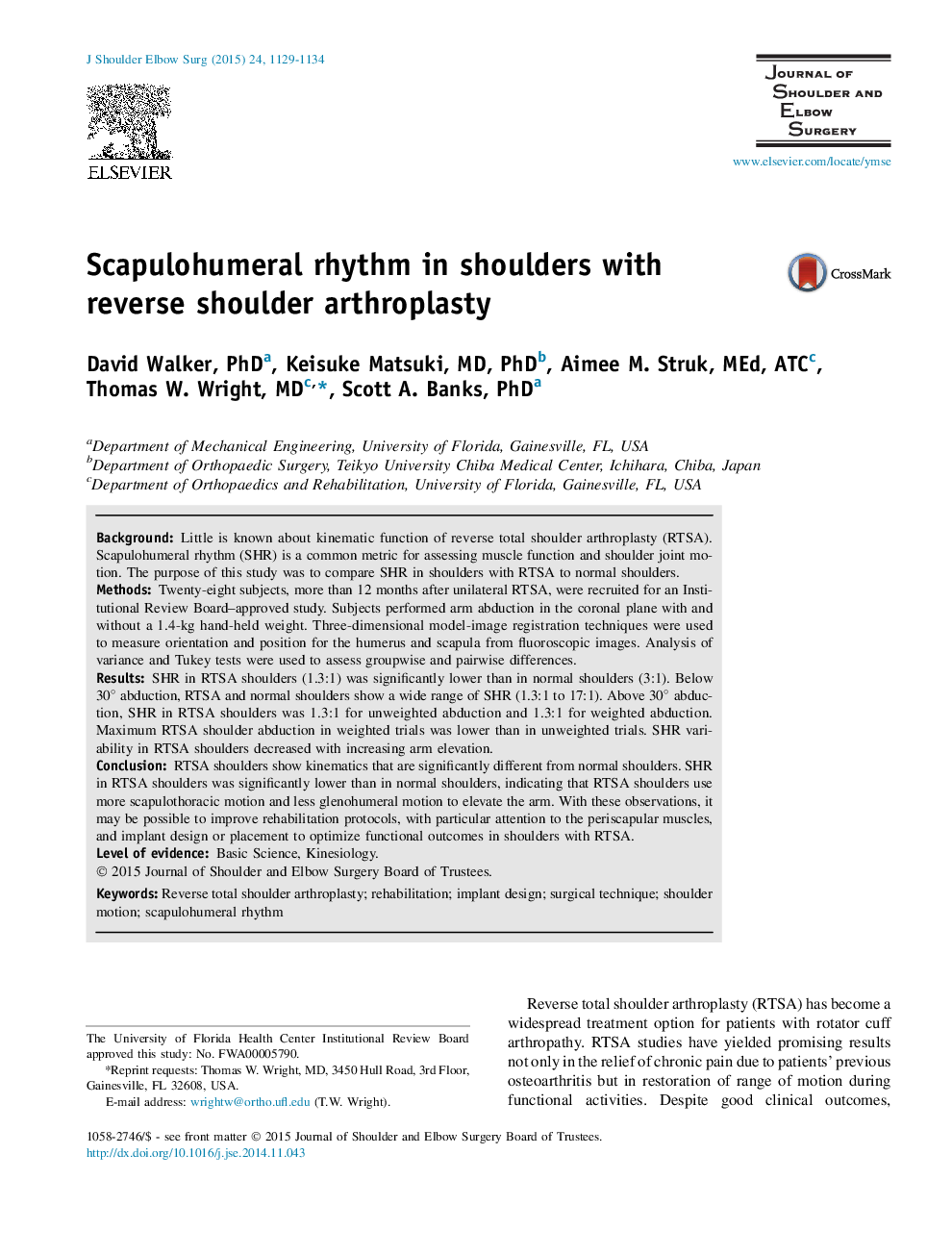| Article ID | Journal | Published Year | Pages | File Type |
|---|---|---|---|---|
| 4073398 | Journal of Shoulder and Elbow Surgery | 2015 | 6 Pages |
BackgroundLittle is known about kinematic function of reverse total shoulder arthroplasty (RTSA). Scapulohumeral rhythm (SHR) is a common metric for assessing muscle function and shoulder joint motion. The purpose of this study was to compare SHR in shoulders with RTSA to normal shoulders.MethodsTwenty-eight subjects, more than 12 months after unilateral RTSA, were recruited for an Institutional Review Board–approved study. Subjects performed arm abduction in the coronal plane with and without a 1.4-kg hand-held weight. Three-dimensional model-image registration techniques were used to measure orientation and position for the humerus and scapula from fluoroscopic images. Analysis of variance and Tukey tests were used to assess groupwise and pairwise differences.ResultsSHR in RTSA shoulders (1.3:1) was significantly lower than in normal shoulders (3:1). Below 30° abduction, RTSA and normal shoulders show a wide range of SHR (1.3:1 to 17:1). Above 30° abduction, SHR in RTSA shoulders was 1.3:1 for unweighted abduction and 1.3:1 for weighted abduction. Maximum RTSA shoulder abduction in weighted trials was lower than in unweighted trials. SHR variability in RTSA shoulders decreased with increasing arm elevation.ConclusionRTSA shoulders show kinematics that are significantly different from normal shoulders. SHR in RTSA shoulders was significantly lower than in normal shoulders, indicating that RTSA shoulders use more scapulothoracic motion and less glenohumeral motion to elevate the arm. With these observations, it may be possible to improve rehabilitation protocols, with particular attention to the periscapular muscles, and implant design or placement to optimize functional outcomes in shoulders with RTSA.
